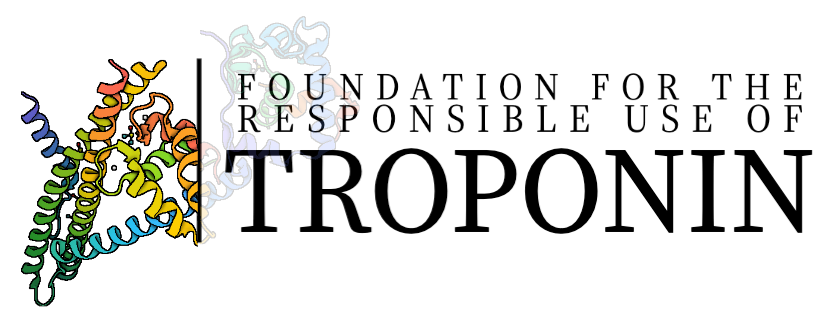Type 1 Myocardial Infarction
Type 1 MI is caused by atherosclerotic plaque rupture or ulceration and resultant intraluminal thrombosis, which may also be complicated by hemorrhage into the plaque [21]. The appearance of new ST-segment elevations in ≥2 contiguous leads or the appearance of a new bundle branch block with ischemic repolarization patterns indicates an ST-elevation MI (STEMI), whereas the presence of a Tn elevation in the absence of these ECG changes indicates a non-ST-elevation MI (NSTEMI). The umbrella of ACS spans STEMI, NSTEMI, and unstable angina [22]. While the increasing sensitivity of Tn assays has reclassified many cases of unstable angina to NSTEMI, unstable angina has not yet disappeared [23]. The terms “STEMI” and “NSTEMI” should only be used when referring to type 1 MI and should be differentiated from type 2 MI and non-MI Tn elevation due to a non-cardiac cause. For instance, “type 2 NSTEMI” is a misnomer.
Type 2 Myocardial Infarction
Type 2 MI is characterized by a mismatch between myocardial oxygen supply and demand; however, unlike patients with type 1 MI, patients with type 2 MI are not experiencing an acute plaque rupture event. Diagnosis requires evidence of myocardial injury alongside at least one of the following findings: anginal symptoms, ischemic ECG changes, or imaging suggestive of a new loss of viable myocardium [5]. Angiography excluding acute plaque rupture is not necessary for the diagnosis of type 2 MI, although it may be otherwise clinically indicated to distinguish type 2 from type 1 MI. Some evidence suggests early cardiac magnetic resonance imaging (MRI) may also have prognostic value in type 2 MI; one study of 437 patients with MI but without coronary obstruction found that late gadolinium enhancement and abnormal T2 mapping values on cardiac MRI were both associated with an increased risk of adverse cardiac events [24]. Type 2 MI can be caused by increased demand alone, such as during episodes of severe hypertension or sustained tachyarrhythmia, or by reduced oxygen delivery alone, such as in cases of severe anemia, hypoxemia, or bradyarrhythmia. Type 2 MI may also be caused by an acute stressor in the setting of underlying coronary disease, including atherosclerosis, microvascular disease, vasospasm, dissection, or embolism [5].
Type 3 Myocardial Infarction
A diagnosis of type 3 MI is reserved for patients who present with typical signs and symptoms of an MI, including ischemic ECG changes or ventricular fibrillation, but die either before cardiac biomarkers are measured, or so soon after symptom onset that their circulating biomarkers have not yet had time to rise. Type 3 MI is a presumptive diagnosis, and should be reclassified as type 1 if evidence of an acute plaque rupture is found on autopsy.
Type 4a, 4b, 4c Myocardial Infarction
Type 4 MI applies to patients with MI who receive a percutaneous coronary intervention (PCI). The fourth UDMI further subclassifies type 4 MI into PCI-related MI (type 4a), MI caused by early or late stent thrombosis (type 4b), and MI caused by in-stent restenosis (type 4c). A diagnosis of type 4a MI is considered within 48 hours of the index procedure. As some level of myocardial injury is expected after PCI, the Tn threshold for MI is set higher for type 4a MI than for types 1 or 2 MI at five times the 99th percentile URL in those with a normal baseline Tn, or a ≥20% increase to more than five times the 99th percentile URL for those with a stable or falling elevated baseline Tn. An exception to this higher threshold is made for individuals with new pathological Q waves, who only require an elevated and rising Tn to meet criteria for type 4a MI. Similarly to types 1 and 2 MI, additional clinical evidence of myocardial ischemia is required for the diagnosis of type 4 MI. Direct angiographic evidence of a flow-limiting complication (e.g. dissection, occlusion of side branch, embolization) or post-mortem findings suggestive of a procedural complication are helpful, but not required, for the diagnosis of type 4 MI if patients already exhibit new ischemic ECG changes, pathological Q waves, regional wall motion abnormalities, or loss of viable myocardium on imaging.
Type 5 Myocardial Infarction
Type 5 MI is used to describe coronary artery bypass grafting (CABG)-related MI. As with type 4 MI, distinguishing infarction from myocardial injury secondary to the procedure itself is often difficult. Patients undergoing CABG often sustain unavoidable myocardial injury from various sources including direct trauma, pump circulation, and ischemia during the procedure. Corroborating Tn elevations with ECG or imaging findings is imperative to the accurate diagnosis of type 5 MI, as myocardial injury is not strongly correlated with infarction in CABG patients. Given the difficulty of determining the performance of Tn or hs-Tn in detecting MI in these patients, the fourth UDMI carried forward thresholds previously established by the third UDMI for all Tn assays: an increase over ten times the 99th percentile URL ≤48 hours from the index procedure in patients with a normal baseline, a ≥20% increase to above 10 times the 99th percentile URL in patients with a stable (≤20% variation) or falling elevated serum Tn, or elevation to any degree with rising values in patients with new pathological Q waves. Other entities, such as the Academic Research Consortium (ARC-2), suggest a diagnosis of CABG- and PCI-related MI at ≥35 times the 99th percentile URL in patients with a normal, stable, or falling baseline meeting at least one ancillary criteria, or a diagnosis of “significant periprocedural myocardial injury” at ≥70 times the 99th percentile URL alone.
Maayah M, Grubman S, Allen S, Ye Z, Park DY, Vemmou E, Gokhan I, Sun WW, Possick S, Kwan JM, et al. Clinical Interpretation of Serum Troponin in the Era of High-Sensitivity Testing. Diagnostics. 2024; 14(5):503. https://doi.org/10.3390/diagnostics14050503

